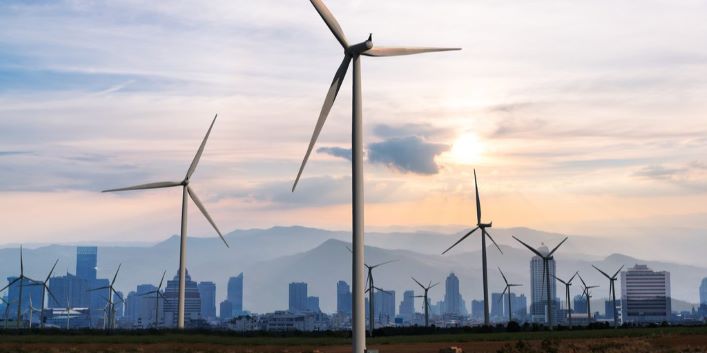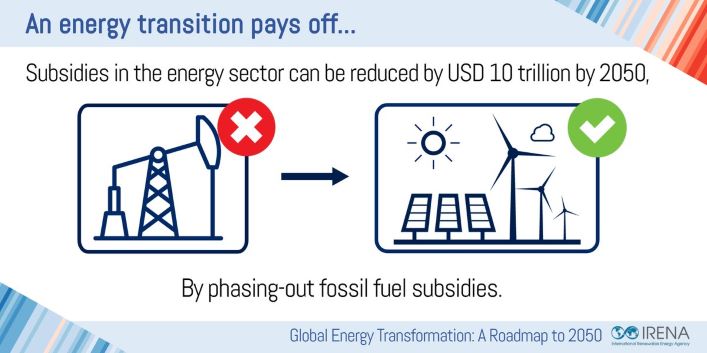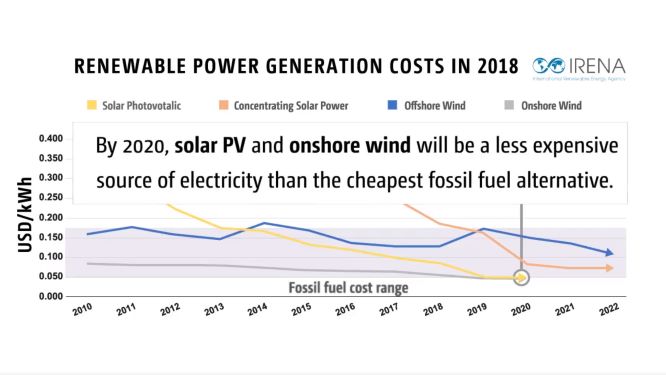IRENA Highlights Increase in RE Usage, Electrification To Reach Climate Goals
The International Renewable Energy Agency (IRENA) presents interesting technical findings on the status of the shift to renewable energy and the REmap transition pathway.

Increased renewable energy use and intensified electrification could help achieve climate goals by 2050, according to an International Renewable Energy Agency (IRENA) study, which describes deployable, cost-effective options for countries to transform the energy sector.
The report titled, ‘Global Energy Transformation: A Roadmap to 2050,’ expands on the IRENA roadmap outlined in the 2018 edition of the report, and describes technology pathways and policy implications to ensure a sustainable energy future. The report pointed out that USD 10 trillion of worth of subsidies can be saved from the energy sector by 2050, by phasing-out fossil fuel subsidies.

The report focuses on two pathways for the global energy system: the “reference case,” which considers countries’ current and planned policies, commitments made in Nationally Determined Contributions (NDCs), and governments’ current projections; and the “REmap case,” which includes the deployment of low-carbon technologies to generate a global energy transformation that meets climate targets and focuses on energy-related carbon dioxide (CO2) emissions.
The report explains that while renewables already make up more than half of newly installed power-generation capacity, their overall share in the energy mix, including power, heat and transport, must increase six-fold to meet climate goals. However, while national commitments under the Paris Agreement on climate change depend on decarbonizing energy, energy-related emissions have increased by 1.3% every year since 2015, and the world’s “carbon budget” could run out within ten years.

The report’s other main findings include:
- Energy-related CO2 emission reductions would have to decrease by 70% by 2050 to meet climate targets;
- A large-scale shift to electricity from renewables could deliver 60% of those reductions, up to 75% if renewables for heating and transport are considered, and 90% with an acceleration in energy efficiency.
- Electricity is becoming a dominant energy provider, and using renewables, such as solar and wind, could meet 86% of the power demand;
- The energy transformation could boost gross domestic product (GDP) by 2.5% and total employment by 0.2% globally in 2050;
- Every USD spent in transforming the global energy system provides a return of between USD 3 and USD 7; and
- Renewables and the energy transition will create more new jobs than those lost in the fossil fuel sector.
The report contends that a global energy transformation “makes economic sense,” with the sector expected to have cumulative investments of USD 95 trillion over the period up to 2050, and the types of investments shifting away from the fossil fuel sector towards energy efficiency, renewables and enabling infrastructure.
In addition, the report also revised the investments which are now expected to be 40% lower than what was estimated in the 2018 edition of the analysis as a result of declining renewable power costs, the potential for further cost reductions, and cheaper and more efficient electrification solutions.
The report also notes that the energy transition must be considered within the broader socioeconomic system. The global energy transition, according to the report, could bring increased social and environmental benefits related to GDP, job creation and human welfare, but regions with high dependence on fossil fuel exports and/or weak, non-diversified domestic supply chains will face more challenges. Improving the transition’s socioeconomic footprint will entail incorporating fair and just transition elements, greater ambition in countries and regions and addressing negative impacts on low-income countries.
In addition, the report underscores IRENA’s efforts to integrate the impact of climate damages into its macroeconomic modeling. It explains that macroeconomic performance under both the reference and REmap cases is significantly impacted by climate damages, leading to a global GDP reduction of 15.5% and 13.2%, respectively, by 2050.
To read more click here




